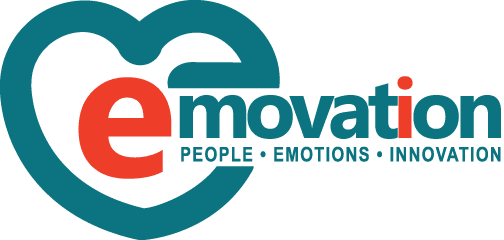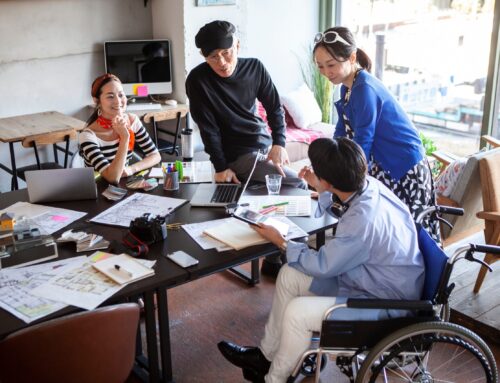Workplace stress affects 83% of United States (U.S.) employees on a daily basis. When the pressures of juggling tasks and crunching deadlines are left unchecked, workers can get overwhelmed and even experience burnout.
Such issues can erode productivity, decision-making, and employee morale. Due to this, mitigating stress isn’t just a personal necessity, but also a strategic imperative.
Although this challenge may seem like a beast, there are ways to tame it. To give you a better understanding of stress management techniques and how to utilize them, we’ll walk you through their intricacies.
What is stress?
Stress is the body’s natural response to challenging situations. It often presents itself through physical, emotional, and behavioral symptoms, such as a state of worry or mental tension, that are detrimental to performance and well-being.
In the workplace context, stress can manifest as fatigue, irritability, a loss of concentration, and even illness—issues that hinder employee productivity and erode workplace dynamics.
However, effectively recognizing stress and addressing it through mindfulness and relaxation practices can greatly benefit your workforce.
Benefits of mindfulness and relaxation practices
Incorporating stress management techniques in the workplace yields multiple upsides:
Improved focus and concentration
50% of U.S. workers aren’t engaged at work, and this greatly impacts how absorbed they are in their day-to-day responsibilities.
The awareness employees develop through mindfulness techniques can enhance their cognitive function and help them block out distractions—aspects that aid decision-making. 53% of meditators even say that mindfulness enhances their memory and concentration.
Reduced anxiety and depression
The National Center for Complementary and Integrative Health (NCCIH) found mindfulness-based approaches to be better for treating anxiety and depression than no treatment at all. It even states they work as well as evidence-based therapies.
Since mental health concerns like anxiety and depression are brought about by stress, mindfulness and relaxation practices can alleviate these ailments. This allows your employees to consistently do well.
Enhanced team dynamics
Less-stressed employees are more calm and cordial, creating an atmosphere that facilitates effective collaboration. This positive environment not only builds better team dynamics, but also a supportive workplace culture.
Increased resilience
Mindfulness and relaxation equips employees to face challenges with a composed and thoughtful approach, as well as cultivates mentally sound and resilient teams.
By embedding such practices into your workplace, you can establish a culture that supports the well-being of both individuals and the entire organization.
Common mindfulness techniques
You now know the upsides of mindfulness and relaxation. To give you a clearer picture of how they’re instilled, we’ll discuss some of the typical methods.
Mindful breathing
Mindful breathing is the simple, yet powerful, practice of focusing on the rhythm of your breathing. It helps employees regulate and slow down their heart rates, therefore reducing stress.
By honing in on the rhythm of every inhale and exhale, workers can shift their attention away from stressors and negative emotions, allowing them to collect themselves and remain calm.
Body scan meditation (BSM)
Being swallowed up by stress may push an employee to overlook that their discomfort may be tied to their emotional state. BSM, however, helps them recognize areas of tension by creating a sense of physical awareness and encouraging relaxation.
This technique involves mentally scanning one’s body from head to toe, and vice versa, gradually. It makes them cognizant of the malaise they’re feeling, which allows them to consciously address it.
Havening technique
The Havening Technique is a self-soothing practice that entails focusing on calming physical sensations. It uses a range of touches on your upper body, and involves counting, visualization, and eye movements.
When applying it to one’s self, the basic technique involves crossing your arms over your chest – basically, it seems like you’re hugging yourself – then rubbing your arms from shoulders to elbows.
Mindful eating
Mindful eating is the practice of eating slowly and savoring each bite. This technique encourages you to focus on your food, enjoy the moment, and fully immerse yourself in the meal.
This approach’s aim isn’t weight loss, but rather stress relief, as it veers your employees’ attention away from their stressors and gives them a well-earned break during a busy day.
Yoga and meditation
These two are proven practices for reducing stress:
- Yoga is an ancient practice that combines physical movements, concentration, and mindful breathing. It promotes calmness, as well as builds strength, endurance, and flexibility.
- Meditation involves focusing or quieting your mind through various mental and physical techniques. This practice has various types, and depending on what you choose, it should help employees relax, as well as reduce stress and anxiety.
Effective relaxation techniques
Deep breathing exercises
Deep breathing is the practice of inhaling slowly through your nose, then exhaling through your mouth using your diaphragm and abdominal muscles. This simple method boosts your blood’s oxygen levels, lowers your blood pressure and heart rate, as well as reduces muscle tension.
This practice is particularly handy when trying to regain composure in high-pressure situations. For instance, 4-7-8 breathing is a common, yet effective, approach that will only require workers to breathe in for 4 seconds, hold their breaths for 7, then slowly breathe out for 8.
Progressive muscle relaxation (PMR)
Also known as Jacobson’s relaxation technique, PMR entails tightening and relaxing each muscle group in a certain sequence. It aims to help you recognize the feeling of built up muscle tension, then releasing it.
It is especially effective for releasing tension that employees accumulate from sitting at a desk for prolonged periods or engaging in mentally demanding tasks.
Guided imagery
Guided imagery is an approach where you imagine a positive, calm, and peaceful scene. This method is commonly used by psychotherapists, but it can be self-taught as well.
Visualizing serene environments, meanwhile, can help employees reduce stress and give them a mental reset—something particularly useful during a hectic workday.
Massage
Massage therapy involves kneading your muscles and other soft-tissues, such as tendons, ligaments, and the like.
Whether applied through a professional session or self-massage tools, this form of manual therapy can greatly relieve physical tension, especially in areas like the neck, shoulders, and back. Even a short massage break can greatly reduce stress and improve mood.
Visualization
Similar to guided imagery, visualization requires the use of your imagination. Rather than picturing a serene scene, however, it involves forming a mental snapshot of successful outcomes—take something you want to achieve in life as an example.
Imagining positive results, meanwhile, can reduce anxiety before facing a challenging situation. It can even give employees’ confidence and focus a boost.
How to implement stress management techniques in the workplace
At this point, you should have a better understanding of various relaxation and mindfulness practices, as well as their advantages. To cap things off, we’ll walk you through ways you can utilize them in the workplace.
Promote relaxation and mindfulness practices
First, encourage the use of stress management techniques among your employees. You can start by offering resources like guided meditation videos, yoga classes, or relaxation apps.
By promoting them, employers send a clear message that stress management is a priority. It takes you one step closer to creating a mentally healthy workplace as well!
Create a supportive environment
Urge employees to take regular breaks and provide quiet spaces that let them practice various stress management techniques. This facilitates the spread of mental wellness, shows you care for their well-being, and breaks the stigma of mental health issues.
Enroll in stress management programs
Professional stress management training can equip employees with valuable knowledge they can apply daily. Such programs offer in-depth, practical tools to handle stress constructively.
Emovation’s ElevateMinds Anxiety and Stress Management Program, for example, can aid your workers in navigating stress-related challenges with calmness, confidence, and resilience. Through it, they can learn how to:
- Identify stress triggers
- Develop healthy coping mechanisms
- Build a healthier, more positive mindset
Lead by example
Employees typically follow their leaders’ examples. By actively taking part in stress management activities, you help them feel more comfortable and encourage their participation.
This also demonstrates your commitment to establishing a supportive culture that values worker well-being.
Conduct regular check-Ins
Actively gathering employee input lets you find ways to address any stress-related issues. Frequent check-ins, whether through private, one-on-one meetings or team discussions, give your workers a platform to voice their concerns.
Additionally, when employees know that their overall wellness is being prioritized, they’re more likely to communicate openly and appreciate the organization.
Wrapping up—Build a more resilient workforce through stress management training and techniques
By integrating mindfulness and relaxation techniques into the workplace, you can cultivate a supportive and resilient work culture. These practices not only improve individual well-being but also drive a more collaborative, focused, and productive environment.
If you need more resources and guidance on the implementation of stress management solutions, simply reach out! We offer various solutions that elevate workplace wellness.






Leave A Comment